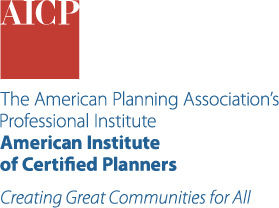The Rules That Shape Urban Form
PAS Report 570
By Donald Elliott, FAICP, Matthew Goebel, AICP, Chad Meadows, AICP

Not a member but want to buy a copy? You'll need to create a free My APA account to purchase.
Create account
From the Euclidean box to the SmartCode, planners have a wide range of tools for shaping the form of cities and how they function.
This practical report looks at six ways cities have adopted "form-based" zoning tools and the results that followed. Case studies describe the pros, cons, and consequences of form-based zoning regulations in Austin, Texas; Mooresville, North Carolina; Denver; Arlington, Virginia; Livermore, California; and Miami. Interviews with planners in each community give real-world perspectives on choosing, implementing, and evaluating form controls.
Because form doesn't exist in a vacuum, the report also looks at the planning challenges of housing affordability, carbon emissions, aging populations, and preservation. Which form controls support positive change in these areas — and which work against it? Lessons learned from cities across the country offer guidance for planners facing these challenges in their own communities.
Product Details
Table of Contents
Chapter 1: Introduction
Planned Unit Developments and Performance Zoning
Form-Based Zoning
Goals and Organization of This Report
Chapter 2: The Wide Range of Form Controls
Form Standards Inserted into Euclidean Districts: Nonresidential Design and Mixed Use Standards in Austin, Texas
Linking Building Types to Permitted Uses: The Use/Form Table in Mooresville, North Carolina
Mandatory Form-Based Zones without Regulating Plans: Main Street Zones in Denver
Optional Districts with Incentives: The Columbia Pike Form District, Arlington County, Virginia
Mandatory Form-Based Districts for Specific Areas: The Hybrid Code in Livermore, California
Mandatory Citywide Form-Based Codes: The Miami 21 Zoning Ordinance
Chapter 3: Form-Based Controls in the Broader Planning Context
Form Controls, Sustainability, and Climate Change
Form Controls and Demographic Changes
Form Controls and Housing Affordability
Form Controls and Historic Preservation
Chapter 4: Conclusion
Different Approaches Are the Norm
Form Controls Are Generally Working
Testing and Tweaking Are Often Required
Limited Effectiveness in Tackling Other Planning Challenges
A User's Guide to Selecting Form-Based Tools
The Bottom Line
References


